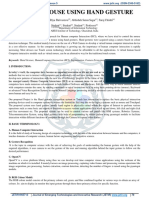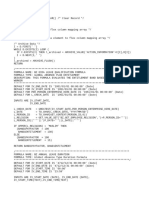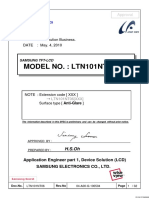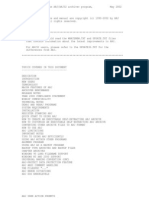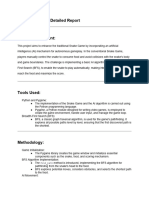Pro Spark Innovation Hand Gesture Project Report
Hand Gesture Recognition Based Python
Project using Webcam
Prepared by: Pro Spark Innovation
August 1, 2025
1 Introduction
Hand gesture recognition has emerged as an essential area in human-computer interaction
(HCI). It enables machines or systems to understand human gestures using computer vision.
With the advancement in artificial intelligence (AI), machine learning (ML), and computer
vision, recognizing and interpreting hand gestures has become more practical and accurate.
This project demonstrates how a Python-based application can detect and classify hand
gestures using a webcam without the need for any additional hardware such as sensors or
gloves.
The primary goal of this project is to allow users to interact with systems using hand
gestures in a contactless and intuitive manner. It is particularly useful in the current era
where touchless interfaces are gaining popularity due to hygiene concerns. This type of
interaction model is not only engaging but also improves accessibility, especially for physically
challenged users.
2 Implementation
The implementation of this project involves the use of Python programming language along
with powerful libraries such as OpenCV and MediaPipe. OpenCV is used for real-time
computer vision, while MediaPipe provides high-fidelity hand tracking.
• Step 1: Capturing the Hand Gesture
A webcam is used to capture the live video stream. The frames from the stream are
processed to detect and analyze hand landmarks.
“‘
• Step 2: Hand Detection and Tracking
MediaPipe provides robust pre-trained models that detect 21 landmarks of a hand.
These landmarks are used to determine the position and motion of fingers.
• Step 3: Gesture Classification
Based on the position of landmarks, a specific gesture (such as open hand, fist, thumb
1
�Pro Spark Innovation Hand Gesture Project Report
up, or finger counting) is recognized using conditional logic or a machine learning
classifier.
• Step 4: Output Action
The recognized gesture is used to control an action such as drawing on screen, control-
ling a slideshow, or interacting with a virtual object. “‘
3 Requirements
To build this project, the following hardware and software components are required:
3.1 Hardware Requirements
• A PC or laptop
• Webcam (built-in or external)
3.2 Software Requirements
• Python 3.8 or above
• OpenCV
• MediaPipe
• NumPy
• PyAutoGUI (for control applications)
Installation of necessary Python packages can be done using pip:
pip install opencv-python mediapipe numpy pyautogui
4 How the Project is Made
The following steps were followed during development:
4.1 1. Environment Setup
Python was installed and all required libraries were configured. Jupyter Notebook or any
other IDE like VSCode was used for development.
4.2 2. Capturing Video from Webcam
Using OpenCV, frames were captured from the webcam in real-time using the VideoCapture
method.
2
�Pro Spark Innovation Hand Gesture Project Report
4.3 3. Integrating MediaPipe for Hand Tracking
The MediaPipe Hands solution was integrated to detect hand landmarks in each frame. The
landmarks were then processed to understand the orientation and structure of the hand.
4.4 4. Logic for Gesture Recognition
Each gesture was defined based on the relative positions of landmarks. For example, if all
fingers are folded, it is classified as a fist. These logical conditions were implemented using
Python conditional statements.
4.5 5. Performing Actions Based on Gestures
Depending on the recognized gesture, actions such as mouse movement, slide change, or
drawing were triggered using libraries like PyAutoGUI.
5 Use of This Type of Project
Hand gesture recognition projects have numerous practical applications:
• Touchless Control: Enables hands-free control of devices, ideal for smart homes or
public installations.
• Assistive Technology: Useful for individuals with mobility challenges to operate
devices.
• Education and Training: Can be used to create interactive learning environments.
• Gaming: Enhances immersive experience in virtual games.
• Presentation Control: Enables slide navigation during seminars without a clicker.
6 Conclusion
This project showcases the power and flexibility of modern computer vision and machine
learning tools. By leveraging only a webcam and Python, we created a functional hand ges-
ture recognition system capable of interacting with digital environments. It is cost-effective,
scalable, and opens the door for many innovative applications in various fields like healthcare,
education, and entertainment.
The project eliminates the need for expensive sensors and proves that impactful solutions
can be developed using free and open-source tools. As computer vision technologies continue
to advance, future versions of this project can incorporate deep learning models to increase
the accuracy and robustness of gesture recognition.
Overall, this project represents a step toward more natural and intuitive human-machine
interaction, making technology more accessible and engaging for everyone.
















































